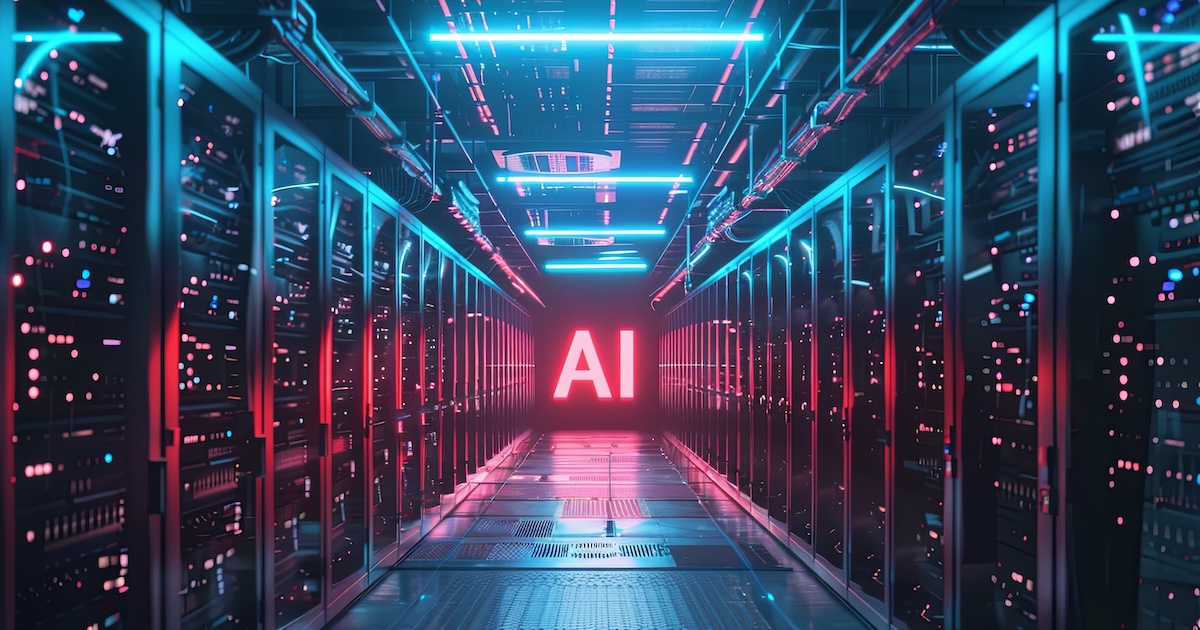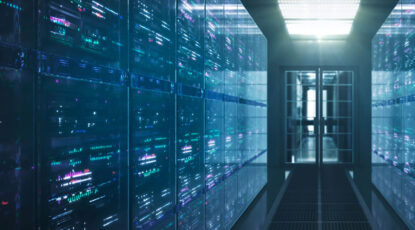Ever wonder what’s powering artificial intelligence (AI)? It’s not floating in the clouds; the true power enabling AI is housed in a data center. These mission-critical facilities located around the world wouldn’t catch your eye, but they are at the core of our digital future and the heart of AI.
Whenever you prompt Chat GPT, scroll through social media, stream a movie on Netflix, or perform a quick Google search, you are relying on data centers.
As technology and new innovations continue to advance, AI data center capabilities are emerging and becoming more in demand to enable breakthroughs and handle the complex operations and optimizations needed for AI workloads.
What is an AI Data Center?
As we increase our reliance on artificial intelligence, AI-capable data centers house the critical infrastructure necessary to fuel the high-performance computing (HPC) needed to meet the surging demands of AI. With racks handling up to a staggering 50kW, these data centers use a significant amount of power to support AI operations. To address this power strain, AI-ready modern data centers are designed with liquid cooling systems that allow for higher-density deployments without overheating issues, which traditional data center air cooling systems struggle to manage.
Three Key Factors: Understanding AI Data Center Power Consumption
As we explore the core of an AI data center, it’s important to consider why AI uses so much power. What contributes to AI’s massive power consumption:
- Graphics Processing Unit (GPU) clusters are fundamental to the operations as these specialized chips handle complex calculations at high speeds. However, their impressive processing capabilities come at the cost of significant energy usage. Each GPU, designed to accelerate computation, draws substantial amounts of power.
- Densely packed servers are another key factor. To maximize computational power, AI data centers often house numerous servers within a limited space. This high-density arrangement, while efficient in terms of physical space, leads to increased heat generation. This high-density setup requires extensive cooling efforts to maintain optimal operating temperatures therefore increasing power consumption. Implementing advanced cooling technologies, while more efficient, still demands considerable energy to operate effectively.
- Unlike traditional computing tasks that may incur downtime, AI processes run continuously. These perpetual operations ensure that AI models are constantly learning and processing data leading to high data center power requirements. However, this relentless requirement results in a nonstop drain on energy resources, as systems remain active around the clock.
How Does AI Enhance a Data Center?
While AI guzzles power, with the average Chat GPT question consuming 10 times as much power as a single Google search, it simultaneously offers innovative solutions to the very challenges it creates. AI is bringing substantial benefits to modern data center operations and aiding in creating more efficient operations.
Starting with AI’s ability to analyze temperature data in real time to predict heat patterns, it can automatically adjust cooling systems, ensuring they operate only when necessary, which leads to lower energy use and water consumption. This smart management of cooling resources significantly reduces the overall power footprint of the data center, enhancing data center energy efficiency.
Dynamic resource allocation further enhances energy efficiency by improving the Power Usage Effectiveness (PUE) of data centers. PUE is a key metric that measures the energy efficiency of a facility. AI dynamically adjusts server usage, storage, and network resources based on real-time demand, creating efficient handling of AI workloads. This means scaling up resources during peak times and down during low demand, ensuring that no energy is wasted on idle infrastructure. By optimizing these resources, AI helps achieve lower PUE values, indicating more efficient use of energy.
Energy source optimization is another crucial benefit. AI can prioritize renewable energy sources such as solar or wind power, seamlessly integrating them into the data center’s energy mix, a key aspect of machine learning for IT operations. This reduces reliance on fossil fuels and promotes a more sustainable operation. By optimizing energy sources, AI ensures that data centers can make the most of available green energy, thus lowering their carbon footprint.
Lastly, AI facilitates better integration with smart grids, allowing data centers to participate in demand response programs. This integration enables these facilities to adjust their energy consumption based on grid signals enhancing their use of alternative power sources and contributing to overall grid stability.
AI drives high power consumption but can also play a critical role in optimizing energy use, reducing waste, and promoting sustainability. By leveraging these capabilities, data centers can achieve a more balanced and efficient operational model.
The Future of AI Data Centers
As the demand for AI and data processing grows, the power consumption of data centers is placing unprecedented strain on the electrical grid, impacting the entire data center industry. According to the CBRE, data centers and data transmission networks account for nearly 2% of global electricity use, with some estimates suggesting this could rise to 9% by 2030. This surge in demand often outpaces the supply capabilities of traditional power grids, leading to challenges in maintaining a stable and reliable power supply.
The situation is exacerbated by the aging infrastructure of many power grids, which are struggling to meet the escalating energy needs of modern data centers. For instance, the U.S. Energy Information Administration (EIA) reports that the grid in many parts of the United States is decades old and needs significant upgrades to handle increased loads. The time it takes to upgrade grid infrastructure can span several years, leaving data centers in a precarious position without sufficient power.
To address these challenges, data center developers and operators are increasingly turning to alternative energy sources. Renewable energy options like solar, wind, and hydroelectric power are becoming vital components of the energy mix for data centers. However processes for implementing solar and wind can be lengthy. Advanced energy solutions such as fuel cells and microgrid systems can be deployed quickly to ensure a more stable and sustainable power supply.
In 2023, onsite power system failures accounted for 44% of data center outages, creating a serious concern. The Bloom Energy Server® offers a solution that provides reliable, sustainable, and resilient power. Built for the power needs of the digital economy, the Bloom Energy Server provides high power availability, mission-critical reliability, and the ability to operate independently of the grid.



